
 Julien de Cerval, The Gardens of Marqueyssac, Vézac, France, designed in the 1860s
Julien de Cerval, The Gardens of Marqueyssac, Vézac, France, designed in the 1860s
 Teshima Art Museum, Tonosho, Japan, Ruye Nishizawa, 2010
Teshima Art Museum, Tonosho, Japan, Ruye Nishizawa, 2010


 Julien de Cerval, The Gardens of Marqueyssac, Vézac, France, designed in the 1860s
Julien de Cerval, The Gardens of Marqueyssac, Vézac, France, designed in the 1860s
 Teshima Art Museum, Tonosho, Japan, Ruye Nishizawa, 2010
Teshima Art Museum, Tonosho, Japan, Ruye Nishizawa, 2010




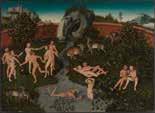

> Showcasing a variety of garden projects from around the world
> Essays by and interviews with experts from different disciplines
> A look at the ecological, social, and political aspects of the garden

> Vielfältige Gartenprojekte aus verschiedenen Regionen der Welt
> Essays und Interviews von und mit ExpertInnen aus unterschiedlichen Disziplinen
> Blick auf ökologische, soziale und politische Aspekte von Gärten
Gardens have always been places of leisure, pleasure, and production. They reflect identities, dreams, and visions. They also have deep cultural histories and immense symbolic potential. The recent revival however has focused less on the garden as a site of romantic refuge and more on the garden as a place to imagine the future otherwise; urban farms, vertical gardens, and other innovative urban planning projects demonstrate that this present return is no timid retreat but a pioneering quest for a world in which ecological justice counts for something.
»Garden Futures« examines what gardens and their design reveal about our relationship to nature. In exploring the history of ideas behind the modern garden, this book takes a close look at the present, searches into the past, and builds bridges with the future. It includes stunning photographs of groundbreaking gardens by artist Derek Jarman and garden designer Piet Oudolf, while critical essays by well-known authors question the ideals of the conventional garden – from seemingly perfect, water-wasting lawns to ubiquitous plants and their colonial roots. Historical photo-essays consider the garden as a political space, and gardeners Gilles Clément and Jamaica Kincaid present the garden as a place of learning where abstract concepts like ecology, climate change, and food insecurity are translated into things you can smell, touch, and taste. »Garden Futures« also features experimental approaches taken by gardeners and landscape architects such as New York–based Julia Watson and Malaysian collective Kebun-Kebun Bangsar. In the age of the Anthropocene, it is hoped that this book is part of recognizing the entire planet as a garden that we need to tend to and use responsibly.
Gärten waren schon immer Orte der Erholung, des Vergnügens und der Produktion. Als Ausdruck von Identitäten, Träumen und Visionen haben sie tiefe kulturelle Wurzeln und große symbolische Bedeutung. Wenn der Garten seit einigen Jahren wieder verstärkt in den Mittelpunkt des gesellschaftlichen Interesses rückt, dann nicht nur als romantisches Refugium, sondern auch als Experimentierfläche für Zukunftsideen.
Dieses Buch untersucht den Garten als Ort, an dem wir unser Verhältnis zur Natur gestalten. Eindrucksvolle Bildstrecken zeigen wegweisende Gartengestaltungen etwa von Derek Jarman oder Piet Oudolf und Textbeiträge von ExpertInnen hinterfragen kritisch das vorherrschende Ideal des Gartens. Bildessays betrachten den Garten unter dem Blickwinkel der politischen Geschichte; in Essays von AutorInnen und GärtnerInnen wie Gilles Clément und Jamaica Kincaid erscheint er als Stätte des Lernens, wo Themen wie Ökologie, Klimawandel und Ernährungsunsicherheit direkt erfahrbar und zugänglich sind. Das Buch stellt außerdem realisierte und experimentelle Projekte von Gärtnern und LandschaftsarchitektInnen vor, die ganz neue Denkansätze und Herangehensweisen entwickeln – darunter die in New York ansässige Landschaftsarchitektin Julia Watson und das malaysische Kollektiv Kebun-Kebun Bangsar.
With texts by
DesigningwithNature
Publishers:VitraDesignMuseum, WüstenrotFoundation
Editors:MateoKries,VivianeStappmanns
Hardcover,clothbinding
24×28.5cm
c.228pages,c.180images 03/2023
978-3-945852-53-8(English)
Art-No.20053502
978-3-945852-52-1(German)
Art-No.20053501
€55,00
OPPOSITE PAGE:
Derek Jarman, Prospect Cottage Garden at Dungeness, Kent, UK, designed from 1986
Jurgen Bey, Tree-trunk bench, 1998
> First comprehensive overview of Iwan Baan’s work
> With striking photographs spanning two decades
> A fascinating insight into his oeuvre and the richness of the built environment around the world
> Erste umfassende Publikation zu Iwan Baans Werk
> Mit eindrucksvollen Fotografien über eine Spanne von zwei Jahrzehnten
> Ein faszinierender Einblick in sein Œuvre und die Vielfalt architektonischer Bauten rund um die Welt
Iwan Baan is one of today’s leading photographers of architecture and urban design. His images document the growth of global megacities and portray buildings by prominent contemporary architects including Herzog & de Meuron, Rem Koolhaas, and Zaha Hadid. The first large retrospective of the Dutch photographer’s work will open at the Vitra Design Museum in autumn 2023. Baan’s vibrant realism puts the focus on people and their relationship to the built environment. His observant eye presents architecture not as an abstract ideal, but as the setting of everyday life, an organic part of the urban fabric – be it suburban sprawl or the booming metropoles of Africa and Asia. The exhibition will include a number of Baan’s iconic works, many of which are familiar from magazines and books, as well as photographs of vernacular and informal architecture all around the world, from the round Tulou of southern China to the rock-hewn churches of Ethiopia. Thanks to the great scope of his vision, Baan’s works offer a broad panorama of human building that impressively demonstrates the existential importance of architecture and urban design.
Iwan Baan gilt als einer der bedeutendsten zeitgenössischen Fotografen für Architektur und Städtebau. In eindrücklichen Bildern dokumentiert er das Wachsen globaler Megacities ebenso wie die Werke bekannter Architekturstars, darunter Herzog & de Meuron, Rem Koolhaas und Zaha Hadid. Ab Oktober 2023 widmet das Vitra Design Museum dem niederländischen Fotografen die erste umfassende Retrospektive. Iwan Baans Fotografien zeichnen sich durch einen lebhaften Realismus aus, der den Fokus auf den Menschen und seine Beziehung zur gebauten Umgebung legt. Mit seinem dokumentarischen Blick porträtiert Baan Architektur nicht als unantastbares Ideal, sondern als Bühne alltäglichen Lebens und Teil lebendiger Stadtstrukturen – seien es wuchernde Vorstädte oder boomende Metropolen in Afrika oder Asien. Neben ikonischen Bildern, die aus Zeitschriften und Büchern bekannt sind, zeigt die Ausstellung Fotografien vernakulärer und informeller Bauten in aller Welt, vom chinesischen Runddorf bis zur äthiopischen Felsenkirche. In der Gesamtschau zeichnen Baans Werke ein umfassendes Panorama menschlicher Bauten, das die existenzielle Bedeutung von Architektur und Stadtplanung bildkräftig vor Augen führt.
Iwan Baan
Editors: Mateo Kries, Mea Hoffmann 10/2023
978-3-945852-58-3 (English)
Art-No. 200 536 02
978-3-945852-57-6 (German)
Art-No. 200 536 01
ABOVE:
Heydar Aliyev Cultural Centre, Baku, Azerbaijan, Zaha Hadid

OPPOSITE PAGE:
CC TV Headquarters, Beijing, China, OMA, 2011
Traditional Lobi village, Northern Ghana, 2013







> Documentation of the journey of the Umbrella House from Tokyo to Weil am Rhein
> Richly illustrated with historical, documentary and contemporary images
> With additional texts and essays
> Dokumentation der Reise des Umbrella Houses von Tokio nach Weil am Rhein
> Reich illustriert mit historischen, dokumentarischen und aktuellen Fotos
> Mit ergänzenden Texten und Essays
The Umbrella House is the smallest residential home by Japanese architect and mathematician Kazuo Shinohara (1925–2006). This book tells the story of his unique masterpiece, which was first built in Tokyo in 1961. More than sixty years later, a stroke of good fortune made it possible to save the Umbrella House from demolition and move it to a new location, where it now stands on the Vitra Campus in Weil am Rhein (Germany). The wooden house’s post-and-beam construction references traditional Japanese domestic and temple architecture. Experts from Japan and Europe supervised the dismantling of the house in Tokyo and its reassembly in Weil am Rhein. The book traces the long journey of the Umbrella House in lavish illustrations including impressions from 1960s Japan, architectural designs and plans, and photographs that document its dismantling and reassembly or show the house in its new location. Texts by Ryue Nishizawa (SANAA), Shin-ichi Okuyama, and David B. Stewart discuss the Umbrella House against the background of Japanese architectural discourse between 1960 and the present.
Das Umbrella House ist das kleinste gebaute Wohnhaus des japanischen Architekten und Mathematikers Kazuo Shinohara (1925 –2006). Das vorliegende Buch widmet sich der Geschichte dieses Meisterwerks. Ursprünglich 1961 in Tokio erbaut, konnte es mehr als 60 Jahre später durch eine glückliche Fügung vor dem Abriss bewahrt werden und fand in Deutschland auf dem Vitra Campus in Weil am Rhein eine neue Heimat. Das in Holzbauweise errichtete Haus lehnt sich an traditionelle japanische Tempel- und Wohnarchitektur an. Der Abbau in Tokio und Wiederaufbau in Weil am Rhein wurde von Fachleuten aus Japan und Europa begleitet. Impressionen aus der Entstehungszeit im Japan der 1960er-Jahre, Entwürfe und Pläne, dokumentarische Bilder des Ab- und Wiederaufbaus und Fotografien des Hauses am neuen Standort zeichnen seine weite Reise nach. Fachkundige Texte von Ryue Nishizawa (SANAA), Shin-ichi Okuyama und David B. Stewart ergänzen das Bild und ordnen das Umbrella House in den japanischen Architekturdiskurs zwischen 1960 und heute ein.
With texts by Ryue Nishizawa, Shin-ichi Okuyama, David B. Stewart, Christian Dehli and Andrea Grolimund.
Kazuo Shinohara
The Umbrella House Project

Editors: Christian Dehli, Andrea Grolimund
Hardcover, screen printing
18 × 25 cm
120 pages, c. 80 images
11/2022
978-3-945852-55-2 (English)
Art.-No. 200 817 01
€ 30,00

> 172 robots on a 1:2 scale
> New, compact edition
> Robots in action on videos accessed by QR code
> 172 Roboter im Maßstab 1:2
> Neue, kompakte Ausgabe
> Über QRCodes zugängliche Kurzfilme der Roboter in Aktion
The catalogue of a unique collection, ROBOTS 1:2 presents the space-themed toys in the R. F. Robot Collection held by the Vitra Design Museum. »Small kinetic sculptures of great originality«: that is how Rolf Fehlbaum, Chairman Emeritus of Vitra and founder of the Vitra Design Museum, describes the objects in his collection. In many years of careful research, he compiled a rare »Wunderkammer« of toy robots made mainly in Japan between 1937 and 1973. The term »robot« was coined in 1921 by Czech writer Karel Čapek in his play »R. U. R.«, which foreshadowed some of the impact robots have had on human lives – from relieving us of hard, dangerous, or unpleasant tasks to taking over our jobs, from small everyday dependencies to shifts in social power dynamics. While the large-format predecessor to this book presented the exhibits in their original size, ROBOTS 1:2 shows the space toys on a 1:2 scale. The largest robot determines the size of the book: this conveys a sense of the uncanny ambivalence that clings to even the most playful representatives of their kind. The fantastic pictures on the original packaging often displayed alongside the figurines vividly illustrate an image of the future that by this time is itself part of our past. QR codes give access to short films showing a number of robots in action.
Als Katalog einer außergewöhnlichen Sammlung stellt ROBOTS 1:2 die Spielzeugroboter der R. F. Robot Collection im Vitra Design Museum vor. »Kleine kinetische Skulpturen von großer Originalität«: So beschreibt Rolf Fehlbaum, Vitra-Chef Emeritus und Gründer des Vitra Design Museums, die Objekte seiner Sammelleidenschaft. In jahrelanger sorgfältiger Recherche gelang ihm die Zusammenstellung eines einzigartigen Bestands hauptsächlich japanischer Spielzeugroboter aus dem Zeitraum 1937 bis 1973. Der Begriff »Roboter« geht auf den tschechischen Schriftsteller Karel Čapek zurück, der in seinem 1921 erschienenen Theaterstück »R.U.R.« schon voraussah, was der Einsatz von Robotern für die Menschheit bedeuten könnte: von der Erleichterung aller möglichen Arbeiten bis hin zur Übernahme ganzer Berufsfelder, von alltäglichen Abhängigkeiten bis hin zu Verschiebungen in der gesellschaftlichen Machtdynamik. Während das großformatige Vorgängerbuch die Sammlungsobjekte in Originalgröße abbildet, präsentiert ROBOTS 1:2 die Spielfiguren im Maßstab 1:2. Der größte Roboter in der Sammlung bestimmt die Größe des Buches: Das vermittelt einen Hauch des Unheimlichen und Zwiespältigen, das selbst diesen kindgerechten Vertretern ihrer Art noch anhaftet. Die Illustrationen auf den oft mit ausgestellten Originalverpackungen veranschaulichen dabei die Entwicklung unserer Vorstellungen der Zukunft in futuristischen Fantasien, die heute längst der Vergangenheit angehören. Über QR-Codes zugängliche Kurzfilme zeigen ausgewählte Roboter in Aktion.
The R. F. Robot Collection, housed in the »Wunderkammer« on the Vitra Campus in Weil am Rhein, Germany, can be visited as part of a guided tour. For more information please go to www.design-museum.de
ROBOTS 1:2

R. F. Collection
Editor: Rolf Fehlbaum, Fifo Stricker Softcover 17 x 24,5 cm
352 pages, approx. 260 images 10/2022
978-3-945852-54-5 (English)
Art.-No. 200 229 02
€ 30,00
LEFT PAGE: Astronaut; producer: Nomura, TN; distributor: Rosko battery operated, Japan 1962, 33 cm
> The ultimate book on modern furniture design
> 1 028 pages, 1 740 objects, 2 852 images, 551 texts
> 71 authors, 237 years, 546 designers, 565 manufacturers
> Das maßgebliche Buch über modernes Möbeldesign
> 1 028 Seiten, 1 740 Objekte, 2 852 Abbildungen, 551 Texte
> 71 Autoren, 237 Jahre, 546 Designer, 565 Hersteller
The Vitra Design Museum’s »Atlas of Furniture Design« is an essential work on the history of modern furniture design. Featuring 1,740 objects by more than 540 designers, it includes some 2,800 illustrations ranging from detailed object photographs to historical images documenting interiors, patents, brochures, and related works of art and architecture. The basis for the »Atlas of Furniture Design« is the collection held by the Vitra Design Museum, one of the largest of its kind. The book presents selected pieces by the most important designers of the last 200 years and documents key periods in design history, including early nineteenth-century industrial furniture in bentwood and metal, Art Nouveau and Secessionist pieces, and works by protagonists of classical modernism and post-war design, as well as postmodern and contemporary pieces. The »Atlas of Furniture Design« employed a team of more than 70 experts and features over 550 detailed texts about key objects. In-depth essays provide sociocultural and designhistorical context to four historical epochs of furniture design and the pieces highlighted here, enriched by a detailed annex containing designer biographies, glossaries, and elaborate info graphics. These features make this publication an encyclopedic reference guide and indispensable resource for collectors, scholars, and experts, and without a doubt a book to be treasured by design lovers all over the world.
Mit dem »Atlas des Möbeldesigns« präsentiert das Vitra Design Museum ein Grundlagenwerk zur Geschichte des modernen Möbeldesigns. Die über 1000-seitige Publikation bietet einen einzigartigen enzyklopädischen Überblick über die Geschichte des modernen Möbels. Vorgestellt werden 1740 Objekte von über 540 Designern, illustriert durch mehr als 2800 Abbildungen, von detailgenauen Objektfotografien bis zu historischen Bildern von Inneneinrichtungen, Patenten, Broschüren und Referenzwerken aus Kunst und Architektur. Grundlage für den »Atlas des Möbeldesigns« ist die Sammlung des Vitra Design Museums, eine der größten ihrer Art. Das Buch umfasst Werke der bedeutendsten Designer der vergangenen 200 Jahre und dokumentiert alle wichtigen Phasen der Designgeschichte. Dazu gehören Möbel des 19. Jahrhunderts aus Bugholz und Metall, Entwürfe aus der Zeit des Jugendstils und der Secession, Designikonen von Prota-gonisten der Moderne, aber auch Möbel der Postmoderne und der Gegenwart. An der Vorbereitung für den »Atlas des Möbeldesigns« waren über 70 Experten beteiligt. Über 550 Texte liefern detailgenaue Objektanalysen, Essays zu vier großen historischen Epochen beschreiben den soziokulturellen und designhistorischen Kontext der gezeigten Objekte, ein umfangreicher Anhang bietet Designerbiografien, Glossare und Infografiken. All dies macht den »Atlas des Möbeldesigns« zu einer unverzichtbaren Recherchegrundlage für Sammler, Wissenschaftler und Experten – und zu einem wunderbar gestalteten Buch für Designliebhaber auf der ganzen Welt.
texts by Mateo
Atlas of Furniture Design

Editors: Mateo Kries, Jochen Eisenbrand
Hardcover
23.5 × 31 cm
1028 pages, 2852 images
2nd revised edition 11/2021 (2019)
978-3-931936-99-0 (English)
Art.-No. 200 814 02
Atlas des Möbeldesigns
978-3-931936-98-3 (German)
Art.-No. 200 814 01
€ 159,90
OPPOSITE PAGE:
Thonet factory in Bystřice, Czechoslovakia (now Czechia), c. 1921
Michael Thonet, No. 14 / Consumer Chair, c. 1855 – 1859
Gerrit Thomas Rietveld, Untitled / Red Blue Chair, 1918/19
Bart van der Leck, »Man te paard« (The Horseman), 1918, oil on canvas


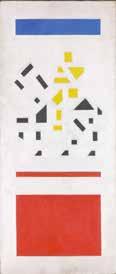





> Includes richly illustrated chronology of plastic history
> Interviews and round tables with designers, researchers, and environmental activists
> Data visualisations on the plastic industry and plastic waste management
> Enthält eine reich illustrierte Chronologie der Kunststoffgeschichte
> Interviews und Gesprächsrunden mit Designern, Forschern und Umweltaktivisten
> Zahlreiche Datenvisualisierungenbzur Plastikindustrie und zum Umgang mit Plastikabfall
Plastic has shaped our daily lives like no other material. Originally associated with convenience and progress, today plastic seems to have lost its utopian appeal. Plastic is everywhere, yet most conspicuous as waste. This book examines the success story of plastic in the twentieth century, and how we should tackle the present global plastic waste crisis. Essays by Mark Miodownik, Susan Freinkel, and Nanjala Nyabola shed light on the history of plastics. A visual chronology illustrates how consumers’ perception of plastics has changed from 1850 to today. Descriptions of 40 objects from renowned collections examine the importance of plastics for material culture. Reprints of fundamental texts on plastics provide a context from the history of ideas. The book reflects the current discourse on plastic with interviews held with designers, industry representatives, researchers, and activists. Underpinning these conversations are data visualizations on plastic production consumption, and recycling.
Plastik prägt unseren Alltag. Lange Zeit stand es für unbeschwerten Konsum und Fortschritt. Diese utopische Aura hat Plastik heute verloren. Plastik umgibt uns überall, aber sichtbar wird es vor allem als Müll. Dieses Buch untersucht die Erfolgsgeschichte von Plastik im 20. Jahrhundert und bietet zugleich eine Plattform für den Diskurs über unseren heutigen Umgang mit Kunststoffen. Drei Essays beleuchten die Kunststoffgeschichte von 1850 bis heute, die zudem durch eine reich bebilderte Chronologie illustriert wird. Beschreibungen von 40 Objekten aus namhaften Sammlungen untersuchen die Bedeutung von Kunststoffen für unsere materielle Kultur. Wiederabdrucke wichtiger Texte aus der Kunststoffhistorie liefern dazu einen ideengeschichtlichen Rahmen. Zahlreiche Interviews, die für das Buch geführt wurden, spiegeln den gegenwärtigen Diskurs über Plastik wider. Unterfüttert werden sie durch Datenvisualisierungen zur weltweiten Verbreitung von Kunststoffen.
Plastic: Remaking Our World
Editors: Mateo Kries, Jochen Eisenbrand, Mea Hoffmann


Co-Editors: Johanna Agerman Ross, Corinna Gardner, Charlotte Hale, Lauren Bassam, Anniina Koivu
Softcover with flaps, embossed
19.5 × 26.5 cm
256 pages, c. 170 images 03/2022
978-3-945852-47-7 (English)
Art.-No.200 533 02
Plastik. Die Welt neu denken
978-3-945852-46-0 (German)
Art.-No. 200 533 01
€ 49,90
Awarded with »The Best German Book Design 2022«

> An interdisciplinary look at robotics which reveals the ambivalences and contradictions inherent in this new technology

> A plea for a concept of design that is dedicated to designing interactions and relationships between humans and machines
> Ein interdisziplinärer Blick auf die Robotik, der die Ambivalenzen dieser neuen Technologie deutlich macht
> Ein Plädoyer für einen Designbegriff, der sich der Interaktion und Beziehung zwischen Mensch und Maschine widmet
This second, updated edition of the book (first published in 2017) includes a number of new projects as well as an introductory text presenting important recent developments in robotics and digitisation. »Hello, Robot. Design between Human and Machine« investigates how robotics has become an integral part of our everyday lives. As these intelligent machines emerge from their hidey-holes in washing machines, cars, and ATMs, we are getting used to encountering them almost everywhere: in industry, and in everyday settings; in our bodies and in the cloud; in video games and, of course, in films and in literature. The book also shows that design in its traditional function as a mediator is indispensable for robots to participate in our day-to-day activities. In a series of in-depth essays and interviews, experts explore what an increasingly digital environment means for us humans. They highlight our often ambivalent relationship to new technologies and discuss the opportunities and challenges they pose for us as individuals and as a society. »Hello, Robot.« broadens the scope of debate to include the ethical and political questions.
Diese zweite, aktualisierte Auflage der ursprünglich 2017 erschienenen Publikation enthält neben ergänzten Projekten zusätzlich einen ausführlichen Introtext, der wichtige Entwicklungen der letzten Jahre in Robotik und Digitalisierung beschreibt. »Hello, Robot. Design zwischen Mensch und Maschine« zeigt, wie präsent die Robotik schon heute in unserem Alltag ist – und wie es dazu kam. Denn zunehmend verlassen die intelligenten Maschinen ihre Verstecke in Waschmaschinen, Autos und Geldautomaten und begegnen uns fast überall: in der Industrie und im alltäglichen Umfeld. Das Buch verdeutlicht auch, dass Design in seiner traditionellen Funktion als Vermittler unverzichtbar ist. In ausführlichen Essays und Interviews gehen Experten der Frage nach, was es für uns Menschen bedeutet, dass unsere Umwelt immer digitaler wird. Sie beleuchten unsere – oft ambivalente – Beziehung zu neuen Technologien und erörtern, welche Chancen und Herausforderungen diese uns als Individuen und als Gesellschaft bieten. Dabei weitet »Hello, Robot.« den Blick für ethische und politische Fragen.
Authors and interviewees: Bruce Sterling, Fiona Raby, Anthony Dunne, Gesche Joost, Carlo Ratti, Amelie Klein and others.
Hello, Robot.
Design between Human and Machine
Editors: Mateo Kries, Lilli Hollein, Amelie Klein
Softcover, embossed
19 × 25 cm
336 pages, c. 260 images

2nd, revised and extended edition, 09/2022 (2017)
978-3-945852-50-7 (English)
Art.-No. 200 532 02
Hello, Robot. Design zwischen Mensch und Maschine

978-3-945852-49-1 (German)
Art.-No. 200 532 01
€ 49,90
> The publication to review comprehensively the postwar design history of both East and West Germany over 40 years up to German reunification in 1989
> Interviews with key design practitioners from both sides
> Erste umfassende Betrachtung der Designgeschichte Ost und Westdeutschlands von der Nachkriegszeit bis hin zur Wiedervereinigung
> Interviews mit Gestaltern beider Länder
The cheap, colourful plastic designs from East Germany pitted against the cool functionalism of West German design: The publication »German Design 1949 – 1989: Two Countries, One History« does away with such clichés. More than 30 years after German reunification, it presents a comprehensive overview of German design history of the post-war period. With over 300 illustrations and numerous examples, the book shows how design featured in daily life on both sides of the Wall, as well as the important role it played in the reconstruction process and as a propaganda tool during the Cold War. Key objects and protagonists are presented alongside formative factors such as the legacy of the Bauhaus and central institutions such as the HfG Ulm. The exceptional case of German division allows for a unique comparison of how design functioned within socialism and capitalism: While in the Federal Republic to the West, it became a generator of the »Made in Germany« export economy, in the East, affordability for broad sections of the population was key. Without ignoring the different realities of East and West, the many cross references that connected design in both states are also examined.
DDR-Design aus buntem, billigem Plastik, kühler Funktionalismus in der BRD: Mit solchen Klischees räumt die Publikation »Deutsches Design 1949 – 1989. Zwei Länder, eine Geschichte« auf. Über 30 Jahre nach der deutschen Wiedervereinigung präsentiert dieses Buch die deutsche Designgeschichte von der Nachkriegszeit bis zum Fall der Mauer. Mit über 300 Abbildungen und zahlreichen Beispielen wird die Bedeutung von Design im täglichen Leben auf beiden Seiten der Mauer, seinen Stellenwert beim Wiederaufbau und seine Rolle als Instrument politischer Propaganda im Kalten Krieg aufgezeigt. Vorgestellt werden Schlüsselobjekte und Protagonisten, prägende Faktoren wie das Bauhaus-Erbe oder wichtige Institutionen wie die Hochschule für Gestaltung in Ulm. Dabei ermöglicht der Sonderfall der deutschen Teilung einen vergleichenden Blick auf die Rolle von Design in Sozialismus und Kapitalismus: Während es in der BRD zu einem Motor der deutschen Exportwirtschaft »Made in Germany« wurde, sollte es in der DDR Produkte für breite Bevölkerungskreise erschwinglich machen. Das Buch beleuchtet die unterschiedlichen Lebenswelten in Ost und West, untersucht aber auch die vielen Querbezüge, die das Design in Ost und West verbanden.
German Design 1949 – 1989

Two Countries, One History
Publishers: Vitra Design Museum, Kunstgewerbemuseum, Staatliche Kunstsammlungen Dresden, and Wüstenrot Foundation

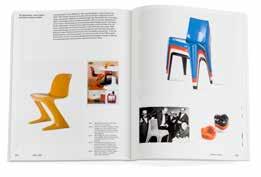
Editors: Mateo Kries, Thomas A. Geisler, Erika Pinner, Klara Němečková
Softcover with flaps, embossed
21.5 × 28 cm
320 pages, c. 380 images 03/2021
978-3-945852-44-6 (English)
Art.-No.200 471 02
Deutsches Design 1949 – 1989
Zwei Länder, eine Geschichte
978-3-945852-43-9 (German)
Art.-No.200 471 01
€ 59,90
With contributions by Paul Betts, Greg Castillo, Petra Eisele, Siegfried Gronert, Jana Scholze, Katharina Pfützner, Eli Rubin, Katrin Schreiter, Oliver Sukrow, Carsten Wolff, among others; interviews with Prem Krishnamurthy, Renate Müller and Dieter Rams.> 3rd updated edition, with new projects since 2018
> Overview of all buildings and objects on the Vitra Campus
> With short biographies of all participating architects, designers and artists
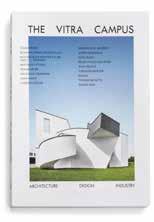


> 3. aktualisierte Auflage, mit den neuen Projekten seit 2018
> Überblick über alle Gebäude und Objekte auf dem Vitra Campus
> Mit Kurzbiografien aller beteiligten Architekten, Designer und Künstler
Since the 1980s, the Vitra company has been erecting buildings in collaboration with some of the leading architects of the present day, including Zaha Hadid, Frank Gehry, Tadao Ando, SANAA, Álvaro Siza, Nicholas Grimshaw and Herzog & de Meuron. The Vitra Campus currently attracts over 350,000 visitors each year. While the renowned Vitra Design Museum presents alternating exhibitions, the Schaudepot gives visitors an insight into parts of the museum’s extensive collection. In addition, during their time on the Campus, visitors can take part in a guided tour of the architecture or a workshop, experience furniture classics and new products from the Vitra Home Collection in the VitraHaus as well as savour the offers of the shops and cafés. With roughly 200 illustrations, »The Vitra Campus« offers an overview of Vitra architecture, its daily use, the evolution of the Campus and the biographies of the architects. It is ideally suited as a souvenir, as a Campus guide or simply a fascinating read on some of the most significant architects of our time and their buildings.
The third edition shows new Campus projects since 2018: »Ring« and »Ruisseau« by designer Ronan and Erwan Bouroullec and »Blockhaus« by Thomas Schütte.
Seit den 1980er-Jahren errichtet die Firma Vitra auf dem Firmengelände in Weil am Rhein Bauten mit führenden Architekten, darunter Zaha Hadid, Frank Gehry, Tadao Ando, SANAA, Álvaro Siza, Nicholas Grimshaw und Herzog & de Meuron. Heute zieht der Vitra Campus jährlich über 350 000 Besucher an. Neben dem renommierten Vitra Design Museum mit wechselnden Ausstellungen gewährt das Vitra Schaudepot Einblicke in die umfangreiche Sammlung des Museums. Während eines Ausflugs auf dem Campus können die Besucher zudem an Architekturführungen und Workshops teilnehmen, im VitraHaus Klassiker und die neuesten Entwürfe der Vitra Home Collection erleben sowie das besondere Angebot der Shops und Cafés genießen. Mit ca. 200 Abbildungen bietet das Buch »Der Vitra Campus« einen Überblick zur Architektur und Geschichte des Campus. Es ist ideal geeignet als Souvenir, als Begleiter für einen Tag auf dem Campus oder einfach als informative Lektüre zu den wichtigsten zeitgenössischen Architekten und ihren Bauten.
Die dritte Auflage zeigt zusätzlich die neuesten Projekte seit 2018: »Ring« und Ruisseau« von Ronan und Erwan Bouroullec und das Blockhaus von Thomas Schütte.
The Vitra Campus
Architecture Design Industry
Editor: Mateo Kries
Softcover with flaps
16.8 × 23.9 cm
216 pages, c. 200 images
05/2020
978-3-945852-36-1 (English)
Art.-No. 203 178 02
Der Vitra Campus
Architektur Design Industrie
978-3-945852-35-4 (German)
Art.-No. 203 178 01
€ 24,90
R.F. Collection
This new publication is dedicated to the Baranger Motion Displays of the R. F. Collection housed at the Vitra Design Museum. Motion Displays were conceived as eye-catching and novel moving objects, which – primarily in the US – were used in jewellers’ shop-window displays to attract customers. With large-scale illustrations of the different Motion Displays the book provides a view into this collection of Rolf Fehlbaum, Vitra Chairman Emeritus and founder of the Vitra Design Museum. Each Motion Display has been given a QR Code which links to an entertaining video clip of the display in action.

Die Publikation ist den Baranger Motion Displays der R. F. Collection des Vitra Design Museums gewidmet. Die Motion Displays sind als Blickfang konzipierte, originelle bewegliche Objekte, die – vorwiegend in den USA – in Schaufenstern von Juwelieren standen, um die Aufmerksamkeit der Kunden zu wecken. Mit großen Abbildungen der einzelnen Motion Displays gibt das Buch einen Einblick in die Sammlung von Rolf Fehlbaum, Vitra Chairman Emeritus und Gründer des Vitra Design Museums. Bei jedem Motion Display verweist ein QR-Code auf einen unterhaltsamen Videoclip.
R.F. Collection
The publication »Space Fantasies 1:1« presents 146 space toys from the collection of Rolf Fehlbaum, Vitra’s chairman emeritus and the founder of Vitra Design Museum. The objects and, when provided, their packaging are shown in their original size. Weblinks take the reader to videos demonstrating how the objects work. »Space Fantasies 1:1« is limited to an edition of one thousand copies, numbered and signed by Rolf Fehlbaum and Fifo Stricker.
Das Buch zeigt 146 Weltraumspielzeuge aus der Sammlung des Chairman Emeritus von Vitra und Gründer des Vitra Design Museums Rolf Fehlbaum. Die Objekte und die dazugehörigen Schachteln (sofern verfügbar) werden im Originalmaßstab gezeigt. Weblinks verweisen auf Videos, die Objekte im Einsatz zeigen. »Space Fantasies 1:1« ist limitiert auf eine Auflage von 1.000 Stück, nummeriert und signiert von Rolf Fehlbaum und Fifo Stricker.
Baranger Motion Displays
R.F. Collection
Editors: Rolf Fehlbaum, Fifo Stricker
Hardcover with jacket
34 × 32.5 cm
140 pages, c. 80 images
10/2021
978-3-945852-48-4 (English)
Art.-No. 200 531 01 € 45,00
Space Fantasies 1:1

R.F. Collection
Editors: Rolf Fehlbaum, Fifo Stricker Hardcover, poster enclosed (64 × 83 cm)
42 × 34 cm
296 pages, c. 270 images 07/2020
978-3-945852-42-2 (English)
Art.-No. 200 228 02
€ 150,00

Home Stories
100 Years, 20 Visionary Interiors
Editors: Mateo Kries, Jochen Eisenbrand Softcover with flaps Inside pages with paper cut-outs
25 × 25.5 cm
320 pages, c. 530 images
02/2020
978-3-945852-38-5 (English)
Art.-No. 200 226 02
Home Stories
100 Jahre, 20 visionäre Interieurs
978-3-945852-37-8 (German)
Art.-No. 200 226 01
€ 59,90
Victor Papanek
The Politics of Design
Editors: Mateo Kries, Amelie Klein, Alison J. Clarke Softcover, debossed, with flaps
19 × 25 cm
400 pages, c. 450 images
10/2018
978-3-945852-26-2 (English)
Art.-No. 200 220 02
978-3-945852-25-5 (German)
Art.-No. 200 220 01
€ 59,90
Winner of the Best Book on History of Design, Richard Schlagman Art Book Awards 2019.

Eames Furniture Sourcebook
Editors: Mateo Kries, Jolanthe Kugler Hardcover, debossed 17 × 24 cm

336 pages, c. 350 images
09/2017
978-3-945852-20-0 (English)
Art.-No. 200 813 02
978-3-945852-19-4 (German)
Art.-No. 200 813 01
€ 49,90
Named as the Best Book of the Modern Art category, International Art Book and Film Festival Perpignan, 2020.
Objects of Desire
Surrealism and Design
1924 – Today
Editors: Mateo Kries, Tanja Cunz Hardccover, cloth binding with die-cut 18.5 x 24.5 cm
368 pages, c. 400 images 09/2019
978-3-945852-33-0 (English)
Art.-No. 200 815 02
Objekte der Begierde
Surrealismus und Design
1924 – heute
978-3-945852-32-3 (German)
Art.-No. 200 815 01
€ 59,90
Night Fever: Designing Club Culture 1960 – Today

Editors: Mateo Kries, Jochen Eisenbrand, Catharine Rossi Softcover, silver emboss, with flaps 20 × 26.5 cm
400 pages, c. 550 images
03/2018
978-3-945852-24-8 (English) Out of stock
Night Fever. Design und Clubkultur 1960 – heute
978-3-945852-23-1 (German)
Art.-No. 200 219 01
€ 59,90
Essential Eames
Words & Pictures
Editors: Eames Demetrios, Carla Hartman Softcover



16.5 × 24 cm
216 pages, c. 125 images 09/2017
978-3-945852-17-0 (English)
Art.-No. 200 812 02
Essential Eames
Zitate & Bilder
978-3-945852-16-3 (German)
Art.-No. 200 812 01
€ 29,90
Together! The New Architecture of the Collective

Editors: Mateo Kries, Mathias Müller, Daniel Niggli, Andreas Ruby, Ilka Ruby
Softcover
23 × 30 cm
352 pages, c. 440 images
06/2017
978-3-945852-15-6 (English)
Art.-No. 200 811 02
Together! Die Neue Architektur der Gemeinschaft
978-3-945852-14-9 (German) Out of stock
€ 49,90
Alexander Girard A Designer’s Universe
Editors: Mateo Kries, Jochen Eisenbrand Hardcover, cloth binding



19.5 × 27.5 cm
512 pages, c. 530 images 03/2016
978-3-945852-05-7 (English) Out of stock
978-3-945852-04-0 (German)
Art.-No. 200 215 01
€ 69,90
The Bauhaus #itsalldesign
Editors: Mateo Kries, Jolanthe Kugler Softcover with flaps
19 × 25 cm
464 pages, c. 500 images 09/2015
978-3-945852-02-6 (English) Out of stock
Das Bauhaus #allesistdesign
978-3-945852-01-9 (German)
Art.-No. 200 214 01
€ 69,90
The Vitra Schaudepot
Architecture, Ideas, Objects
Editors: Mateo Kries, Viviane Stappmanns
Softcover with flaps
17 × 23.5 cm
108 pages, c. 480 images 01/2017
978-3-945852-13-2 (English)
Art.-No. 200 810 02
Das Vitra Schaudepot
Architektur, Idee, Objekte
978-3-945852-12-5 (German)
Art.-No. 200 810 01
€ 14,90
The Lucky, Plucky Chairs
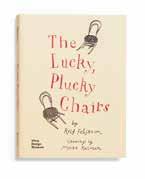
Author: Rolf Fehlbaum
Illustrations: Maira Kalman
Hardcover with jacket
15.5 × 20.5 cm
48 pages, c. 35 images 12/2015
978-3-945852-09-5 (English)
Art.-No. 200 083 02
Die tollkühnen Stühle
978-3-945852-08-8 (German)
Art.-No. 200 083 01
€ 14,95
Making Africa: A Continent of Contemporary Design

Editors: Mateo Kries, Amelie Klein Softcover
24 × 33.5 cm
336 pages, c. 350 images 04/2015
978-3-931936-52-5 (English)
Art.-No. 200 213 02
978-3-945852-00-2 (German)
Art.-No. 200 213 01
Making Africa. Un continente de diseño contemporáneo
978-8-495216-75-5 (Spanish)
Art.-No. 200 213 04
€ 69,90
Konstantin Grcic
Panorama
Editors: Mateo Kries, Janna Lipsky
Softcover 21 × 28 cm
320 pages, c. 440 images 03/2014
978-3-931936-07-5 (English)
Art.-No. 200 530 02
978-3-931936-06-8 (German)
Art.-No. 200 530 01
€ 69,90
Pop Art Design

Editors: Alexander von Vegesack, Mathias Schwartz-Clauss, Peter Dunas
Softcover in plastic 28 × 28 cm
272 pages, c. 325 images
10/2012
978-3-931936-96-9 (English) Out of stock
978-3-931936-95-2 (German)
Art.-No. 200 808 01
€ 69,90
Gerrit Rietveld

Die Revolution des Raums
Author: Ida von Zijl
Hardcover with jacket 23 × 29 cm
240 pages, c. 400 images
05/2012
978-3-931936-94-5 (German)
Art.-No. 200 527 01
€ 75,00
Lightopia
Editors: Mateo Kries, Jolanthe Kugler
3 softcover volumes in slipcase
21.5 × 28.5 cm
397 pages, c. 300 images
09/2013
978-3-931936-05-1 (English)
Art.-No 200 529 02
978-3-931936-04-4 (German)
Art.-No 200 529 01
€ 79,90
Louis Kahn

The Power of Architecture
Editors: Mateo Kries, Jochen Eisenbrand, Stanislaus von Moos Hardcover with jacket 24 × 32 cm


370 pages, c. 500 images
09/2012
978-3-931936-92-1 (English) Out of stock
978-3-931936-91-4 (German)
Art.-No. 200 807 01
€ 79,90
Rudolf Steiner
Alchemy of the Everyday
Editors: Mateo Kries, Alexander von Vegesack Hardcover with jacket
21 × 28.5 cm
336 pages, c. 550 images 06/2010
978-3-931936-86-0 (English) Out of stock
Rudolf Steiner

Die Alchemie des Alltags
978-3-931936-85-3 (German)
Art.-No. 200 805 01
€ 79,90
Antibodies/Antikörper Fernando & Humberto Campana 1989 – 2009

Editors: Alexander von Vegesack, Mathias Schwartz-Clauss
Softcover
24.5 × 32 cm
128 pages, c. 250 images 05/2009
978-3-931936-47-1 (English/German)
Art.-No. 200 803 01
€ 32,90
Grow Your Own House Simón Vélez and Bamboo Architecture / Simón Vélez und die Bambusarchitektur
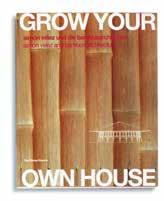
Editors: Alexander von Vegesack, Mateo Kries
Softcover
24 × 29 cm
265 pages, c. 300 images 2000
978-3-931936-25-9 (German/English)
Art.-No. 200 165 09
€ 22,40
Le Corbusier. A Study of the Decorative Art Movement in Germany
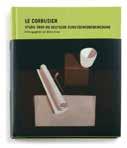
Editors: Mateo Kries, Alexander von Vegesack Hardcover with bellyband
16.5 × 20 cm
224 pages, c. 115 images 06/2008
978-3-931936-29-7 (English)
Art.-No. 200 186 02 Out of stock
Le Corbusier: Studie über die deutsche Kunstgewerbebewegung
978-3-931936-28-0 (German)
Art.-No. 200 186 01
€ 36,40
Multicolor *
Ronan Bouroullec
Poster, matte print on glossy (high quality) paper, with printed packaging
2019
67.5 × 67.5 cm
Art.-No. 205 504 32
€ 54,00
Bicolor *
Ronan Bouroullec
Poster, matte print on glossy (high quality) paper, with printed packaging
2019
67.5 × 67.5 cm
Art.-No. 205 504 33
€ 54,00
Green *
Ronan Bouroullec
Poster, matte print on glossy (high quality) paper, with printed packaging
2019
50 × 67.5 cm
Art.-No.. 205 504 34
€ 54,00
Orange *
Ronan Bouroullec


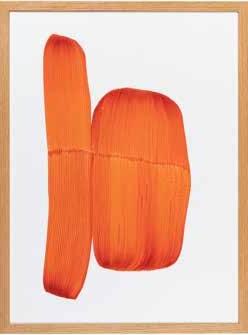

Poster, matte print on glossy (high quality) paper, with printed packaging
2019
50 × 67.5 cm
Art.-No. 205 504 35
€ 54,00
The Chair Collection
The Chair Collection *
Poster 2022
84 × 119 cm
Art.-No. 205 508 01
€ 26,00
NEW EDITION
R. F. Robot Collection *

Poster 2017 84 × 119 cm
Art.-No. 205 504 31
€ 26,00
Alexander Girard

Coloring Book
La Fonda del Sol
Softcover
18 × 18 cm
42 sheets
ISBN 978-3-945852-21-7
Art.-No. 200 218 02
€ 9,90
* Only available in Germany. Frame is not included.
Located on the Vitra Campus in Weil am Rhein, Germany, the Vitra Design Museum is one of the world’s leading museums of design. It is dedicated to the research and presentation of design, past and present, and examines its relationship to architecture, art, and everyday culture. The museum mounts at least two major exhibitions every year in its main building, designed by Frank Gehry. Additional shows are presented in the Vitra Design Museum Gallery and in the Vitra Schaudepot, designed by Herzog & de Meuron. Up to ten annual exhibitions, as well as a wide array of events, workshops, talks, and tours, provide a rich programme of cultural activities on the Vitra Campus.
For our current calendar of events, please visit www.design-museum.de/en
Das Vitra Design Museum auf dem Vitra Campus in Weil am Rhein zählt zu den führenden Designmuseen weltweit. Es erforscht und vermittelt die Geschichte und Gegenwart des Designs und setzt diese in Beziehung zu Architektur, Kunst und Alltagskultur. Im Hauptgebäude von Frank Gehry präsentiert das Museum jährlich zwei große Wechselausstellungen. Weitere Ausstellungen werden in der Vitra Design Museum Gallery und im Vitra Schaudepot von Herzog & de Meuron gezeigt. Insgesamt präsentiert das Museum bis zu zehn Ausstellungen jährlich auf dem Vitra Campus, ergänzt um zahlreiche Veranstaltungen, Workshops und andere Vermittlungsangebote.
Unser aktuelles Programm finden Sie unter www.design-museum.de

File name: Vitra Campus Map_Print_Regular AW updated 2022






 View of the Oudolf Garden on the Vitra Campus, Weil am Rhein
View of the Oudolf Garden on the Vitra Campus, Weil am Rhein




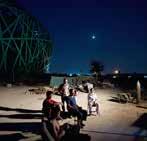







Vitra Design Museum exhibitions around the world. More information: www.designmuseum.de/worldwide
Aktuelle Wanderausstellungen des Vitra Design Museums. Nähere Informationen: www.designmuseum.de/worldwide
All publications may be ordered directly from the Vitra Design Museum or from our distributors. Prices reflect German retail prices incl. VAT and are subject to change without prior notice given.
Alle Publikationen sind direkt beim Verlag des Vitra Design Museums erhältlich oder bei unseren Vertriebspartnern. Preise entsprechen den deutschen Verkaufspreisen inkl. gesetzlicher Mehrwertsteuer, Preisänderungen vorbehalten.
Vitra Design Museum
Charles-Eames-Str. 2 79576 Weil am Rhein Germany
T +49.7621.702.3200 verlag@design-museum.de
Distribution
Germany and Austria
LKG, Leipziger Kommissions- und Großbuchhandelsgesellschaft GmbH
An der Südspitze 1 – 12 04571 Rötha
Germany
T +49.34206.65.100 lkg@lkg-service.de
Peter Jastrow
T +49.30.44732.180 service@buchart.org North and East Germany
Michael Klein
T +49.8742.9645522 mi-klein@t-online.de Northwest Germany
Stefan Schempp
T +49.89.23077737 stefan.schempp@mnet-mail.de South and Southwest Germany, Austria
Switzerland
AVA Verlagsauslieferung AG
Centralweg 16
8910 Affoltern am Albis Switzerland
T +41.44.762.4200 avainfo@ava.ch
Giovanni Ravasio
T +41.44.2606131 g.ravasio@bluewin.ch
France
Interart
1 rue de l’Est 75020 Paris
France
T +33.1.43493660 commercial@interart.fr
Americas Artbook | D.A.P.
75 Broad St., Suite 630 New York, NY 10004 USA
T +1.212.627.1999 orders@dapinc.com
For a complete list of sales representatives, please visit www.artbook.com.
For the UK and the rest of the world, please contact Thames & Hudson: Thames & Hudson Ltd
181A High Holborn
London WC1V 7QX United Kingdom
T +44.20.7845.5000 sales@thameshudson.co.uk
For a complete list of UK and export representatives, please visit www.thamesandhudson.com.
Imprint / Credits
Vitra Design Museum GmbH
Charles-Eames-Str. 2
79576 Weil am Rhein Germany
T +49.7621.702.3200
info@design-museum.de
HRB 413163 Amtsgericht Freiburg
UST ID DE 813099569
photo: Jürgen Hans; p 8/9 © Iwan Baan; p 10 © Vitra, photo: Dejan Jovanovic; p 12 © Vitra Design Museum, photo: Moritz Herzog; p 15 (Top image left) Collection Alexander von Vegesack, Domaine de Boisbuchet, France; (Top image right) © Vitra Design Museum, photo: Jürgen HANS, www.objektfotograf.ch; (Middle image left) © VG Bild-Kunst, Bonn 2019, © Vitra Design Museum, photo: Jürgen HANS, www.objektfotograf.ch; (Middle image right) © VG Bild-Kunst, Bonn 2019, Collection Kröller-Müller Museum, Otterlo; p 16 © Vitra Design Museum, photo: Ludger Paffrath; p 23 © Vitra Design Museum, photo: Moritz Herzog; p 30/31 (Clockwise from to top to bottom) © Vitra, photo: Julien Lanoo; © Vitra, photo: Thomas Dix; © Vitra, photo: Mark Niedermann; © Vitra, photo: Lorenz Cugini; © Vitra, photo: Marek Iwicki; © Vitra, photo: Julien Lanoo; © Vitra Design Museum, photo: Thomas Dix; p 32 © Vitra, photo: Marek Iwicki
Cover: Illustration by LKDK (Lorenz Klingebiel, Dominik Krauss) Berlin, © Vitra Design Museum; p 2 © Laugery – Les Jardins de Marqueyssac, Dordogne, France; p4 © Iwan Baan; p 6 (Top image) © Photo: Howard Sooley, 1990–1994; (Bottom image) © Vitra Design Museum,Jane Atfield, Gae Aulenti, Iwan Baan, Lina Bo Bardi, Céline Baumann, Arno
Brandlhuber, Ronan & Erwan Bouroullec, Gilles Clément, Dianna Cohen, Ilse Crawford, Salvador Dalí, Marcel Duchamp, Charles & Ray Eames, Petra Eisele, Susan Freinkel, Front, Daisy Ginsberg, Alexander Girard, Global Tools, Walter Gropius, Keith Haring, Herzog & de Meuron, Finn Juhl, Friedrich
Kiesler, Jamaica Kincaid, Shiro Kuramata, Dorte Mandrup, Marshall McLuhan, Mark
Miodownik, mischer’traxler, Carlo Mollino, Isamu Noguchi, Nanjala Nyabola, Opendesk, Meret Oppenheim, Victor Papanek, Christa
PetroffBohne, Dieter Rams, Alice Rawsthorn, Man Ray, Daniel Rybakken, Peter Saville, Jerszy Seymour, Kazuo Shinohara, Bas
Smets, Ettore Sottsass, Studio 65, Superflux
Vitra Design Museum
Charles-Eames-Str. 2
79576 Weil am Rhein Germany
www.design-museum.de